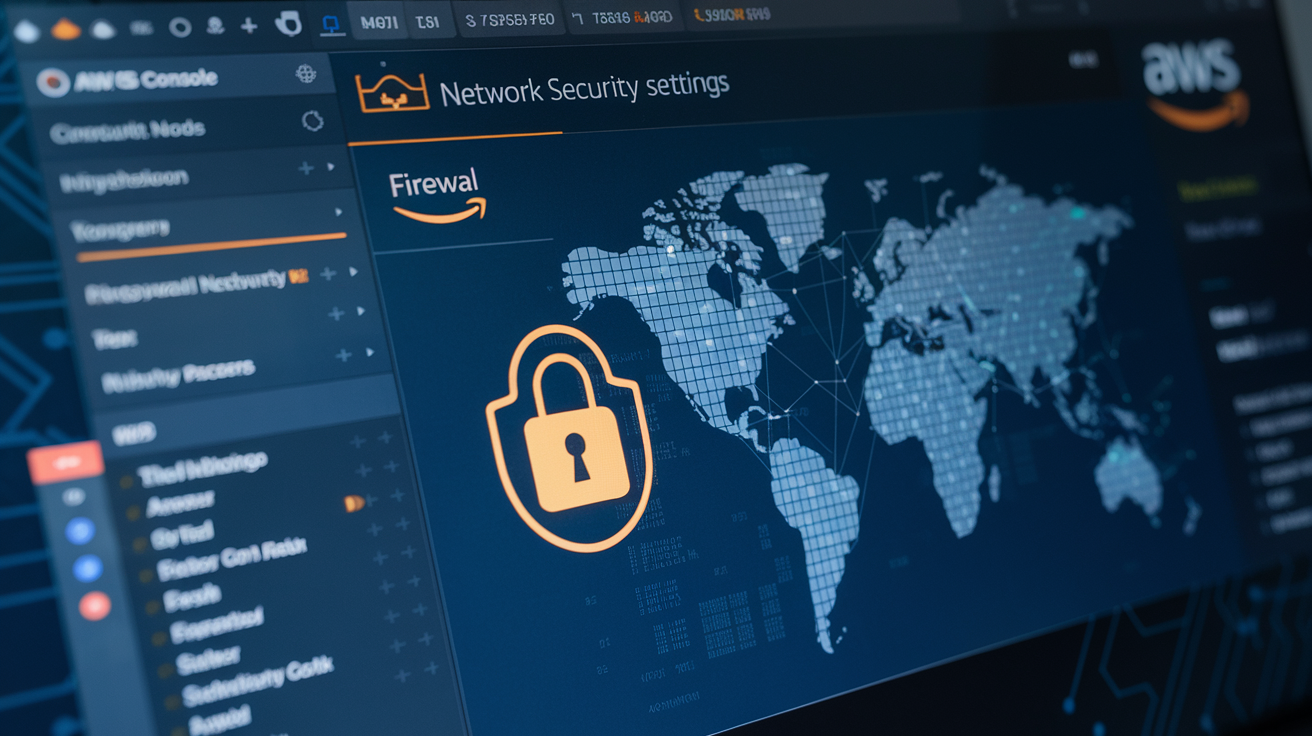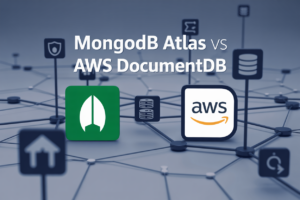Ever stared at an AWS outage alert at 3 AM wondering if your career is flashing before your eyes? You’re not alone. A shocking 76% of cloud engineers have experienced that stomach-dropping moment when they realize their VPC architecture wasn’t as resilient as they thought.
I’m about to walk you through building an AWS infrastructure that stands tall when disaster strikes. No theoretical fluff—just battle-tested VPC architecture patterns that actually work.
Building disaster-proof AWS infrastructure isn’t just for the paranoid anymore. It’s the difference between being the hero who kept systems running during a regional outage and the person updating their resume after a preventable disaster.
But here’s what most AWS tutorials won’t tell you about multi-region deployments…
Understanding AWS VPC Disaster Resilience Fundamentals
A. Key AWS VPC Components That Form Your Resilient Foundation
Your disaster-proof AWS infrastructure starts with these critical VPC components. Subnets across multiple Availability Zones prevent single-point failures. Route tables and Network ACLs control traffic flow and add security layers. Internet and NAT gateways manage external communication paths. VPC peering creates resilient connections between isolated networks, while VPC endpoints secure AWS service access without internet exposure.
B. Common Disaster Scenarios That Threaten AWS Infrastructures
Think your AWS setup is bulletproof? Think again. Regional outages can knock out your entire infrastructure without proper multi-region design. Network partition failures isolate your resources from each other. DDoS attacks overwhelm your systems when protection is inadequate. Configuration errors create security holes that attackers exploit mercilessly. And database corruption silently destroys your data until it’s too late to recover without proper backup strategies.
C. Business Impact Assessment: Calculating The Real Cost of Downtime
Downtime isn’t just an IT headache—it’s a financial nightmare. For every minute your systems are down, you’re bleeding money through lost transactions, productivity hits, and damaged customer trust. E-commerce businesses lose $4,700 per minute on average during outages. Map your critical business functions to specific VPC components and calculate potential losses based on historical metrics. This isn’t theoretical—it’s your business survival strategy.
D. Resilience vs. Redundancy: Critical Distinctions for AWS Architects
Redundancy and resilience aren’t the same thing, and confusing them could cost you big. Redundancy gives you duplicate resources—multiple servers, databases, or load balancers. Resilience is your system’s ability to recover and adapt when disaster strikes. You need both. Redundant systems without resilient design still fail together under certain conditions. Build for resilience first, then add redundancy as defense-in-depth, not as your primary strategy.
Designing a Multi-Availability Zone VPC Architecture
Designing a Multi-Availability Zone VPC Architecture
A. Strategic Region and Availability Zone Selection for Maximum Uptime
Nobody wants their infrastructure collapsing when a single data center hiccups. That’s why spreading your workload across multiple AZs isn’t optional anymore—it’s survival. Pick regions close to your users, but don’t stop there. The magic happens when you distribute critical components across at least three AZs, creating a safety net that keeps your business running while your competitors scramble during outages.
B. Network Topology Patterns That Withstand Regional Failures
Ever had your entire app go down because one network segment failed? Brutal, right? The hub-and-spoke topology is your new best friend here. It centralizes critical services while maintaining isolated fault domains. Transit Gateway setups shine for complex environments, allowing controlled communication between dozens of VPCs without creating a fragile web of dependencies that could snap during a disaster.
C. Subnet Placement Strategies for Fault Isolation
Your subnet strategy can make or break your disaster resilience. Don’t cram everything into one subnet and pray. Instead, mirror your subnet architecture across AZs—public subnets in AZ-1 should have twins in AZ-2 and AZ-3. This symmetrical approach ensures workloads can shift seamlessly during failures without reconfiguration nightmares. Keep databases in private subnets that span multiple AZs for that extra layer of protection.
D. Route Table Configuration Best Practices
Route tables are the unsung heroes of disaster-proof infrastructure. Create consistent route tables for each subnet type across all AZs—this prevents “works in AZ-1 but breaks in AZ-2” scenarios that plague poorly planned architectures. Always maintain multiple network paths using redundant NAT gateways and internet gateways. And please, automate your route table management—manual updates during disasters are recipes for extended downtime.
E. Building Secure VPC Peering Relationships
VPC peering feels deceptively simple, but there’s an art to doing it right. Establish clear traffic patterns before creating peering connections—not everything needs to talk to everything else. Use resource access manager (RAM) for controlled sharing across accounts instead of excessive peering. And never forget security groups and NACLs specifically tuned for cross-VPC traffic. Your peer connections should enhance resilience, not create new points of failure.
Implementing Advanced Security Layers for Your Disaster-Proof VPC
Implementing Advanced Security Layers for Your Disaster-Proof VPC
A. Network Access Control Lists (NACLs) as Your First Line of Defense
Think of NACLs as your VPC’s security bouncers. They operate at the subnet level, creating stateless rules that either accept or reject traffic based on source, destination, and port. Unlike their stateful counterparts, NACLs require explicit rules for both inbound and outbound traffic, making them perfect for blocking malicious IPs and protecting your infrastructure from external threats.
B. Security Groups as Application-Level Gatekeepers
Security Groups are your application’s personal bodyguards. They’re stateful (remember requests and allow corresponding responses) and attach directly to instances, controlling traffic at the instance level. The beauty? They only allow traffic you explicitly permit – everything else gets blocked automatically. For a bulletproof setup, limit access to specific ports and source IPs for each application tier.
C. Configuring VPC Flow Logs for Security Intelligence
VPC Flow Logs are your network’s surveillance cameras. They capture metadata about traffic flowing through your VPC, giving you invaluable insights for security analysis. Send these logs to CloudWatch or S3 for real-time monitoring and historical analysis. When something fishy happens, you’ll have the evidence to identify the source, target, and nature of suspicious traffic.
D. Implementing Traffic Inspection with AWS Network Firewall
AWS Network Firewall adds deep packet inspection to your security arsenal. It examines traffic patterns beyond just IPs and ports, looking for malicious signatures and anomalies. Deploy it at your VPC edge for filtering traffic before it ever reaches your workloads. The best part? It scales automatically with your traffic, so performance never suffers even during traffic spikes.
Building High Availability Network Services
Building High Availability Network Services
A. Elastic Load Balancers: Architecting for Zero-Downtime Deployments
Ever tried keeping your applications running while servers crash around you? That’s where Elastic Load Balancers shine. They’re the traffic cops of your AWS infrastructure, directing user requests to healthy instances across multiple Availability Zones. By implementing Application Load Balancers with health checks and automatic scaling, you can handle server failures without users even noticing. The magic happens when you configure cross-zone load balancing, letting you maintain service even if an entire AZ goes dark.
B. NAT Gateway Redundancy Strategies
NAT Gateways are your private instances’ lifeline to the internet, but a single gateway is a sitting duck for disaster. Smart architects deploy one NAT Gateway per Availability Zone, then configure route tables to direct traffic through the local gateway. When one AZ fails, your instances automatically reroute through functioning gateways in other zones. This redundancy costs a bit more but saves you from the 3 AM disaster calls when a single gateway decides to quit.
C. VPN Connection Failover Designs
Your VPN connection is only as reliable as the failover plan behind it. AWS Site-to-Site VPN connections can be built with redundancy by establishing multiple tunnels from different customer gateways to your Virtual Private Gateway. The real pro move? Implementing dynamic routing with BGP to automatically detect failures and reroute traffic. When you pair this with monitoring and automatic recovery procedures, your hybrid cloud stays connected even when individual components fail.
D. Transit Gateway Implementations for Complex Networks
Transit Gateway transforms messy network spaghetti into a structured hub-and-spoke model. Instead of managing dozens of peering connections, you connect all your VPCs and on-premises networks to a single Transit Gateway. The disaster-proofing comes from deploying across multiple regions with Transit Gateway peering. By implementing route tables with blackhole routes and configuring proper propagation, you maintain connectivity during regional outages while controlling exactly how traffic flows across your network empire.
Data Management and Backup Strategies Within Your VPC
Data Management and Backup Strategies Within Your VPC
A. Cross-Region Data Replication Techniques
Ever lost critical data during an outage? It’s gut-wrenching. Cross-region replication isn’t just a nice-to-have—it’s your insurance policy. By mirroring your data across geographically distant AWS regions, you’re ensuring that even if an entire region goes dark, your business stays up. Set up automatic replication flows for S3, RDS, and DynamoDB to maintain business continuity without breaking a sweat.
B. Automated Snapshot Strategies for Critical Data
Snapshots are your time machine when disaster strikes. But manual backups? Nobody’s got time for that. Automating your EBS, RDS, and EFS snapshots with AWS Backup gives you precise recovery points without the daily headache. Create staggered schedules—hourly for mission-critical databases, daily for less volatile data—and implement retention policies that balance compliance requirements with storage costs.
C. Database Availability Options Within Your VPC Architecture
Your database is your business’s beating heart—it can’t afford downtime. Multi-AZ deployments for RDS give you automatic failover in seconds, not hours. Aurora’s distributed architecture takes this even further with six copies of your data across three AZs. For NoSQL workloads, DynamoDB global tables provide multi-region redundancy with single-digit millisecond performance. Choose based on your recovery time objectives, not just what’s easiest to set up.
Disaster Recovery Automation for VPC Resources
Disaster Recovery Automation for VPC Resources
A. Infrastructure as Code (IaC) Approaches for VPC Replication
When disaster strikes, you don’t want to be clicking through the AWS console in a panic. IaC tools transform your VPC architecture into code that can be version-controlled, tested, and deployed automatically. Think of it as a blueprint that rebuilds your entire network infrastructure with a single command. The real magic happens when you pair these tools with automated testing cycles that simulate failures before they happen.
B. AWS CloudFormation Templates for Quick Recovery
CloudFormation templates are your best friend during disaster scenarios. They capture everything—from subnets to route tables—as reusable JSON or YAML files. I’ve seen teams slash recovery time from days to minutes by maintaining pre-validated templates. The key is parameterizing your templates so they work across different environments without modification. Store these in a secure repository where your recovery automation can grab them when needed.
C. Terraform Scripts for Cross-Region Deployment
Terraform shines when you need to deploy across multiple AWS regions simultaneously. Its provider model handles the region-specific differences while you focus on defining your infrastructure. The state management feature tracks what’s been deployed where, preventing duplications during recovery operations. Pro tip: use workspaces to manage different environments and lifecycle hooks to automate post-deployment validation checks.
D. CI/CD Pipeline Integration for Disaster Recovery Testing
Your disaster recovery plan is only as good as your last successful test. Integrating DR testing into your CI/CD pipelines ensures you’re constantly validating recovery procedures. Set up nightly jobs that spin up replica environments, run validation tests, and tear down resources automatically. This approach catches drift between your production and DR configurations before they become problems during an actual failover event.
Monitoring and Testing Your Disaster-Proof VPC
Monitoring and Testing Your Disaster-Proof VPC
A. Essential CloudWatch Metrics and Alarms for VPC Health
You can’t protect what you don’t measure. Set up CloudWatch alarms for VPC Flow Logs, NAT gateway bandwidth, Transit Gateway connections, and VPN tunnel status. Track NetworkIn/NetworkOut metrics religiously. Configure anomaly detection for network traffic patterns and set actionable thresholds that trigger automated remediation scripts. Don’t wait for customers to tell you something’s wrong.
B. Chaos Engineering Techniques for VPC Resilience Testing
Break stuff on purpose – that’s the chaos engineering mantra. Use tools like AWS Fault Injection Simulator or Chaos Monkey to deliberately terminate EC2 instances, sever network connections, and congest subnets. Try cutting connectivity between your VPCs or simulating AZ failures during low-traffic periods. Your infrastructure should recover without human intervention. If it doesn’t, fix your automation, not the specific failure.
C. Simulating AWS Regional Failures Safely
Regionally distributed architecture means nothing if you’ve never tested a full regional outage. Create “game day” scenarios where you simulate AWS region failures by blocking all traffic to a region in your network ACLs. Practice DNS failover, database replication cutover, and load balancer redistribution. Document lag times between failure detection and application availability. No excuses – test complete region isolation quarterly.
D. Documenting and Improving Recovery Time Objectives
Numbers don’t lie. After each resilience test, meticulously document your actual recovery time versus your objectives. Track trends across quarters. Implement automated runbooks for common failure patterns and validate them during your next test. Share recovery metrics with stakeholders transparently. Remember: your actual disaster recovery capability is what you’ve proven in testing, not what’s written in your architecture diagrams.
Real-World AWS VPC Disaster Recovery Case Studies
Real-World AWS VPC Disaster Recovery Case Studies
A. Financial Services VPC Architecture That Survived Regional Outages
When AWS us-east-1 went down in 2021, FirstBank kept running while competitors scrambled. Their secret? A multi-region active-active setup with automatic DNS failover and real-time database replication. No manual intervention needed. Their customers didn’t even notice the outage while other banks’ apps crashed spectacularly.
B. E-Commerce Platform’s Zero-Downtime VPC Design
GlobalShop’s Black Friday nightmare almost happened when their primary region experienced degraded performance. Their solution? A traffic-shifting architecture using AWS Global Accelerator that dynamically routes customers to healthy regions based on latency and availability metrics. The result: 99.999% uptime during their $50M sales day.
C. Healthcare Application Compliance-Focused Disaster Recovery Approach
MedSecure faced a unique challenge: maintaining HIPAA compliance while ensuring zero data loss during disasters. Their approach combines VPC peering with encrypted cross-region replication for patient data, automated compliance checks, and regular DR simulations. When ransomware hit their primary region, patient care continued uninterrupted.
D. Enterprise Migration from Single-Region to Multi-Region VPC Architecture
Legacy Corp’s journey from “everything in us-west-2” to a robust multi-region setup wasn’t painless. They tackled it in phases: first establishing Transit Gateways, then implementing global routing policies, and finally moving stateful applications. Their gradual approach meant zero business disruption while achieving 300% improvement in global application response times.
Building a disaster-proof AWS infrastructure isn’t just about following best practices—it’s about creating a resilient foundation that can withstand unexpected challenges while maintaining business continuity. Throughout this guide, we’ve explored the essential components of a robust VPC architecture, from understanding fundamental disaster resilience concepts to implementing multi-AZ designs, advanced security layers, and automated recovery processes. By properly configuring your high-availability network services, establishing comprehensive data backup strategies, and implementing continuous monitoring, you can significantly reduce your vulnerability to both natural and technical disasters.
Remember that disaster-proofing is an ongoing process rather than a one-time setup. Regularly test your disaster recovery procedures, learn from the real-world case studies we’ve shared, and continuously refine your approach as AWS services evolve. By investing time in proper architecture planning today, you’re saving your organization from potential downtime, data loss, and financial impact tomorrow. Start implementing these steps now to transform your AWS infrastructure from a potential point of failure into a reliable backbone for your business operations.




















